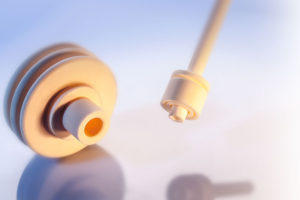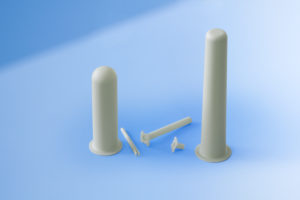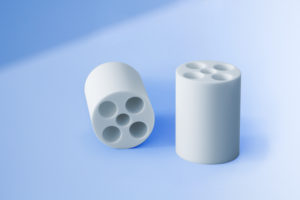High Temperature Technology
Temperatures above 1.000 °C are difficult to endure for most metals for a long period. Here engineering ceramics play the important rule to withstand operating temperatures of 1.750 °C and more without any problems. A further advantage of the ceramic materials is the (ultra) high vacuum resistance even at the highest operating temperatures. In addition, high-performance ceramics show an excellent dimensional stability, a softening and/or material flow does not occur. Besides the shape stability of oxide ceramics they are also characterized by a high chemical resistance with a corresponding good oxidation resistance, making them ideal for use as crucibles in the field of high performance analytical devices. BCE company manufactures precision and high purity Al2O3 crucibles with a purity up to 99.95%.
By affixing inner or outer threads, it is also possible to realize temporary joints in high-temperature applications. The production of customized solutions is easily feasible – including: ground-in lid with and without holes or threads, partial metallization of crucibles for soldering with other materials is also realizable as adding an electrically conductive surface for measuring contacts, etc.
Application examples
- Analysis crucible for mass spectrometer or DTA units made of A-997
- High-temperature components for the UHV range (Z-507, Z-513, A-997)
- Effusionstiegel from A-997
- Knudsen cells (Effusivquelle) of A-997
- Calibrating thermal measurements in furnace construction of A-960



